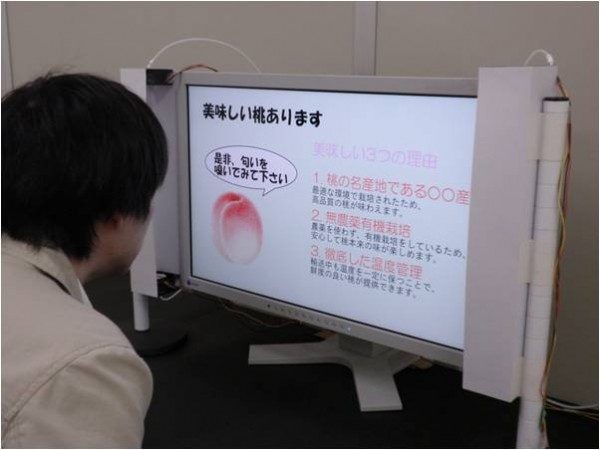Introducing the oPhone
Edwards, a Harvard professor and head of science/art innovation lab Le Laboratoire, just unveiled the first commercial version of his oPhone, the DUO, a cylindrical gadget that transmits scents (called oNotes) via an app called oSnap. Think of it as a mobile messaging platform for sending aromatic emoticons. The oPhone might look like a strange medical device, but Edwards is betting it could usher in the beginning of the aromatic communication age.
(http://www.wired.com/2014/06/you-can-now-buy-this-scent-sending-phone)
I was so happy to read this article on wired today. I have been waiting for such a device to go from research to production since Google’s Nose Beta, their 2013 April’s fool joke. However, there is lab research in technologies that allows the reproduction of odours. A design team from the Tokyo University of Agriculture and Technology revealed this odoriferous monitor at the IEEE Virtual Reality conference last month (March 2013). The concept is simple: a television monitor framed with four fans, each pumping odors in a precise direction. The odors are generated using hydrogel chips that vaporize when heated. (http://thecreatorsproject.vice.com/blog/wake-up-and-smell-the-coffee-google-nose-beta-already-exists)

Photo courtesy of IEEE Virtual Reality Conference
In the beginning on 2013 I made a new friend in Amsterdam, Kate McLean. She is a PhD candidate within Information Experience Design at the Royal College of Art and she is working on sensonry maps. She applies academic research with field studies (smell walks), recruiting different levels of sniffers (perfumers, evaluators and admin staff from International Flavors and Fragrances (IFF), landscape architects, service designers, an art historian, a film extra etc) in cities of interest. The outcome of her research is a graphical representation of odours mapped as artistic artefacts. She has been exhibiting her Sensory maps since 2010. I had the luxury of walking and smelling Jordan in Amsterdam in May 2013 and that gave me some food for thought.
Therefore, I would like to raise the following questions. If we allow the individual user to record odours in urban environments, how can we contribute into the multi-sensory experience of cities? Could we encourage participation from the individual user to create an additional layer for Google maps? Taking into consideration that odours can fade away, how could archives of sensory maps contribute to historical evidence of urban development? Would that be a degree thesis or a business idea?
You can support oPhone on Indiegogo.

